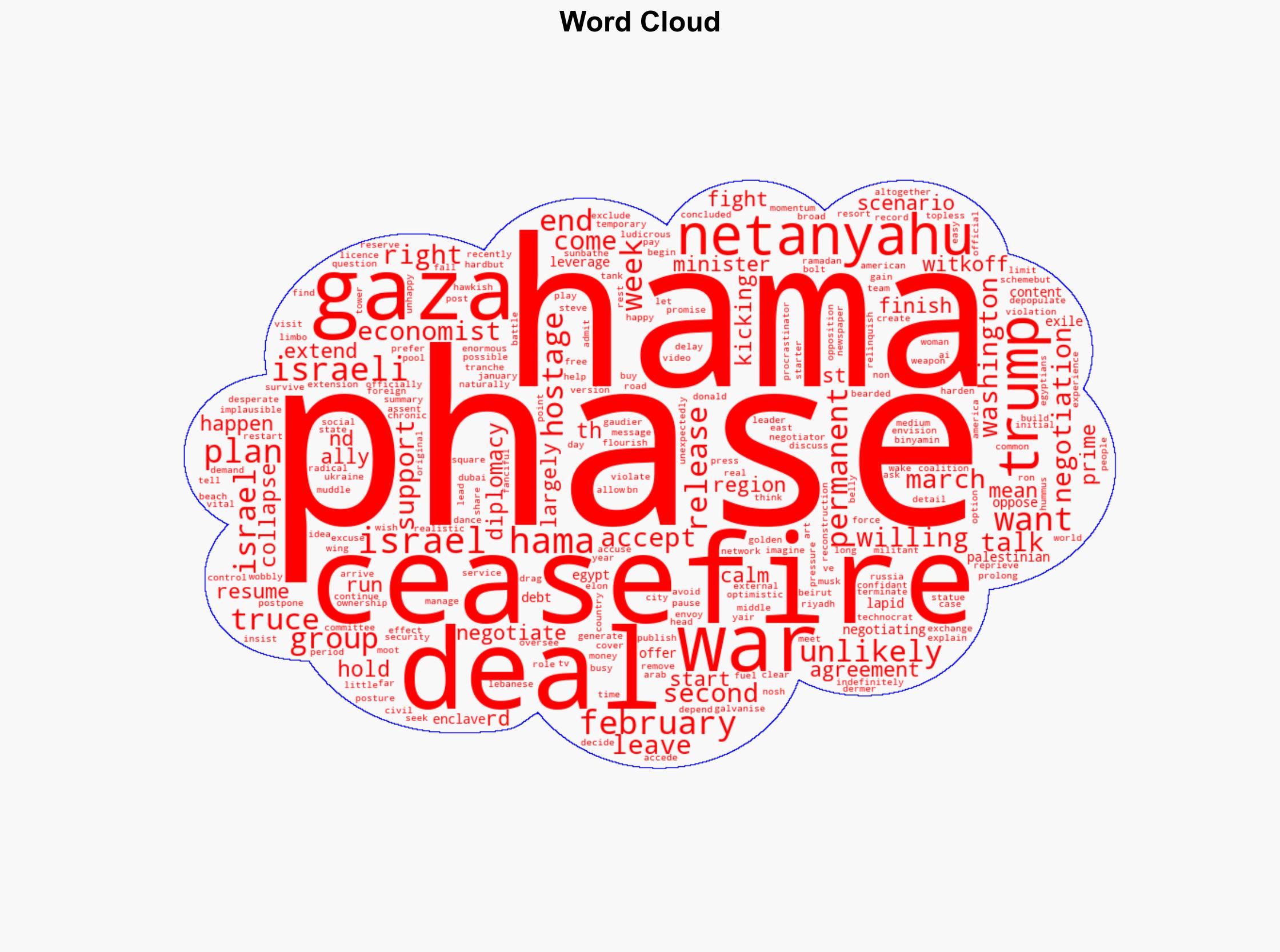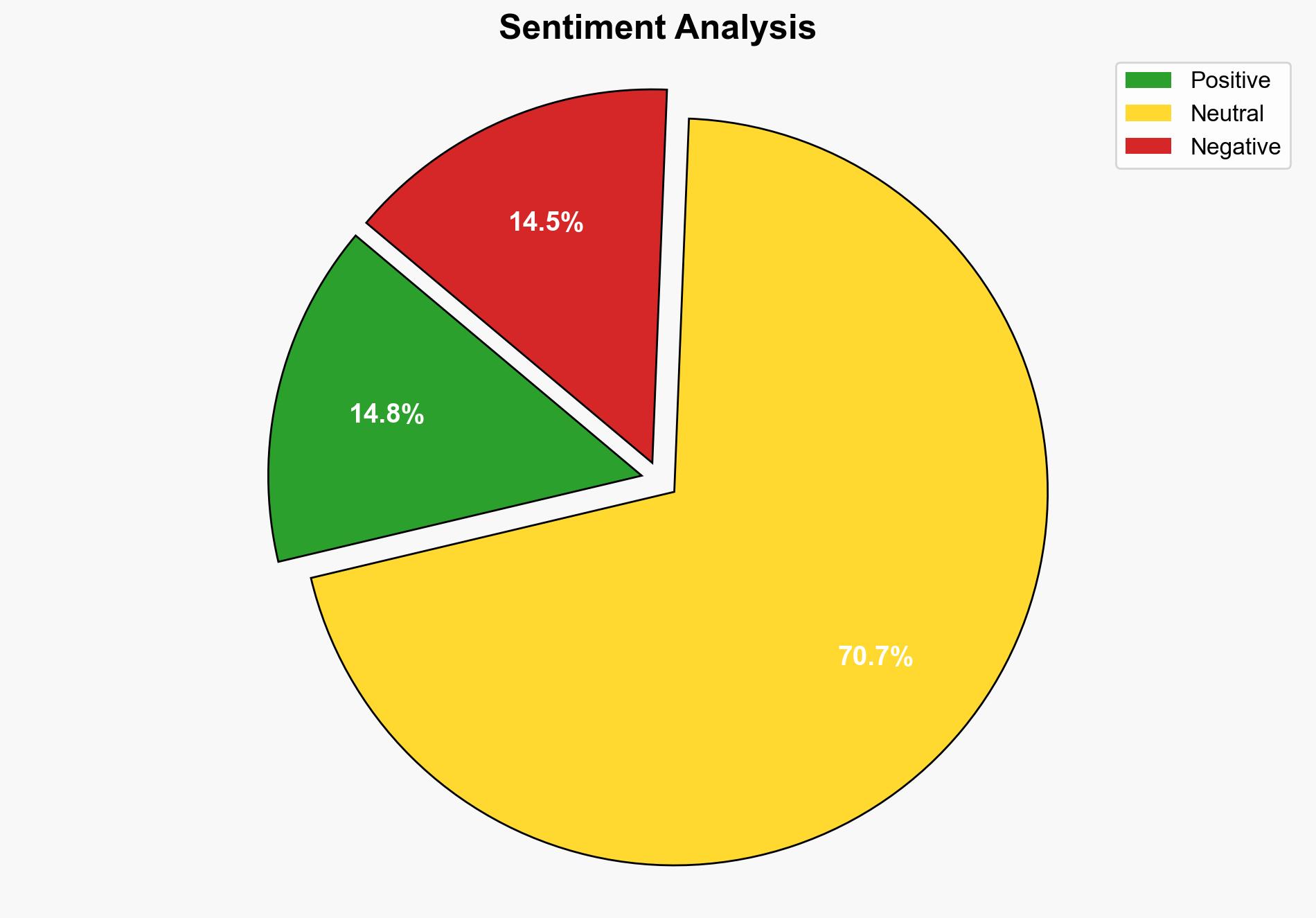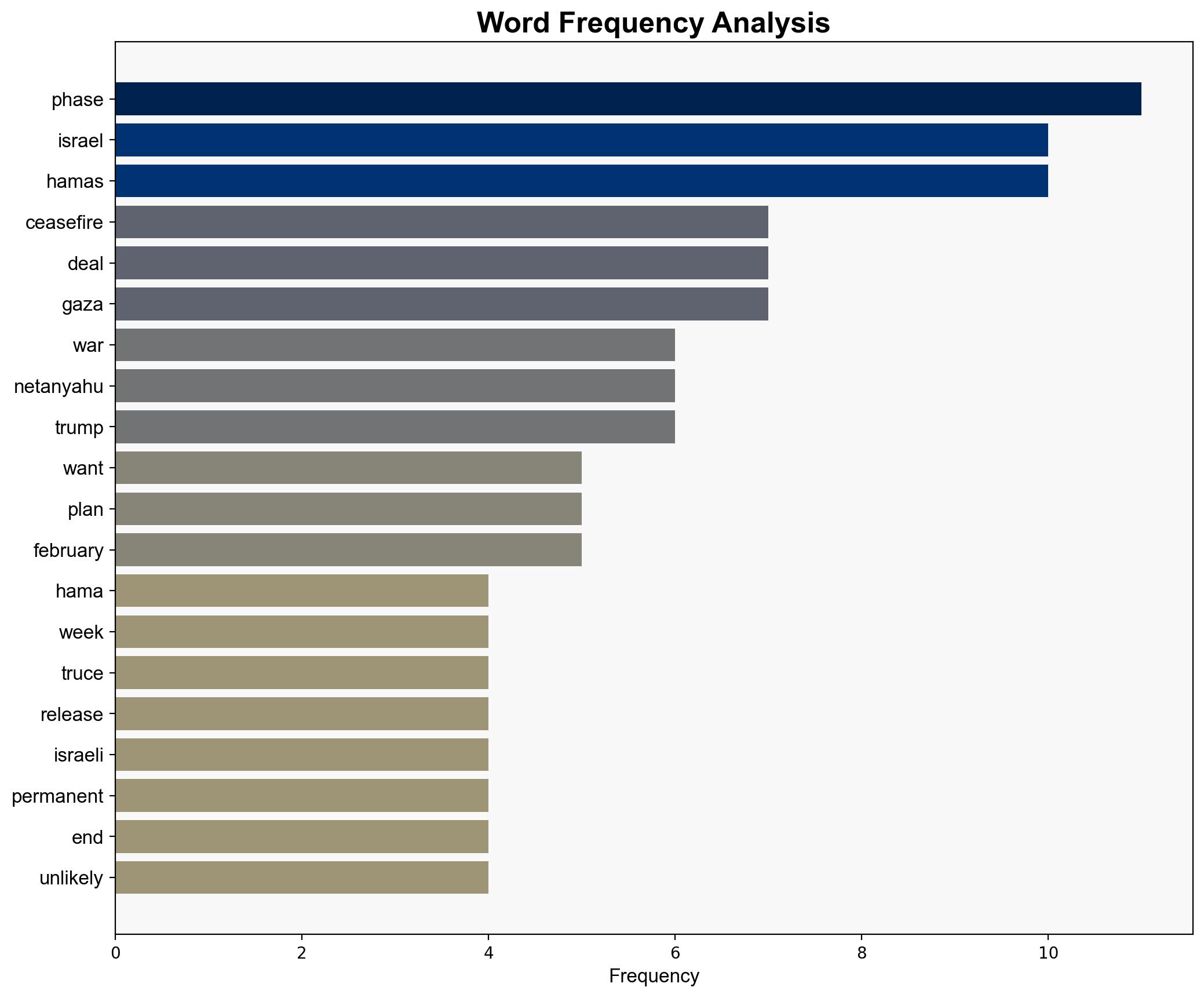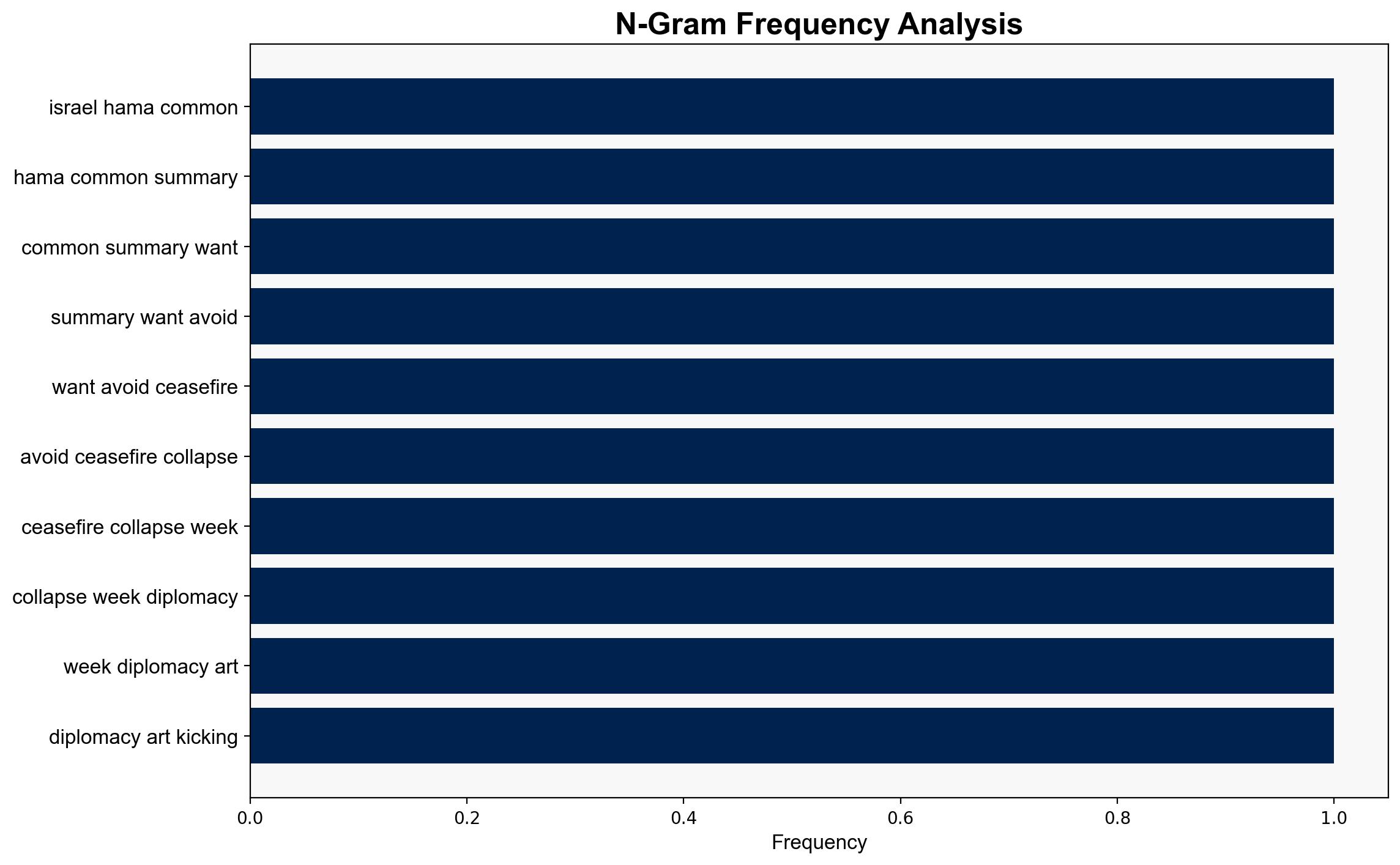Israel and Hamas have something in common – Livemint
Published on: 2025-04-24
Intelligence Report: Israel and Hamas have something in common – Livemint
1. BLUF (Bottom Line Up Front)
The current situation between Israel and Hamas involves a tenuous ceasefire with potential for both conflict escalation and diplomatic resolution. Key findings suggest that while temporary truces are in place, underlying tensions and strategic interests could lead to renewed hostilities. Recommendations include leveraging diplomatic channels to solidify ceasefire terms and preparing contingency plans for potential conflict resumption.
2. Detailed Analysis
The following structured analytic techniques have been applied to ensure methodological consistency:
SWOT Analysis
Strengths: Existing diplomatic frameworks and international interest in stabilizing the region.
Weaknesses: Deep-seated mistrust and historical animosities between parties.
Opportunities: Potential for international mediation to facilitate long-term peace agreements.
Threats: Risk of ceasefire collapse leading to renewed violence and regional instability.
Cross-Impact Matrix
The interplay between regional diplomacy, internal political pressures, and international interventions creates a complex environment. The involvement of external actors like the United States and regional powers could either stabilize or destabilize the situation depending on their engagement strategies.
Scenario Generation
Scenario 1: Successful negotiation leads to a permanent ceasefire, reducing regional tensions.
Scenario 2: Ceasefire collapses, resulting in renewed conflict and humanitarian crises.
Scenario 3: Prolonged negotiations with intermittent skirmishes, maintaining a status quo of instability.
3. Implications and Strategic Risks
The potential collapse of the ceasefire poses significant risks, including humanitarian crises and regional destabilization. The involvement of international actors could either mitigate or exacerbate these risks, depending on their strategic objectives and diplomatic effectiveness.
4. Recommendations and Outlook
- Strengthen diplomatic efforts to solidify the ceasefire and address underlying issues.
- Prepare for potential conflict scenarios by enhancing regional security cooperation.
- Monitor international interventions to ensure they align with peace-building objectives.
- Best Case: A comprehensive peace agreement is reached, stabilizing the region.
- Worst Case: Full-scale conflict resumes, leading to widespread instability.
- Most Likely: Continued negotiations with sporadic violence, maintaining a fragile peace.
5. Key Individuals and Entities
Binyamin Netanyahu, Donald Trump, Steve Witkoff, Yair Lapid, Ron Dermer
6. Thematic Tags
(‘national security threats, cybersecurity, counter-terrorism, regional focus’, ‘cybersecurity’, ‘counter-terrorism’, ‘regional focus’)





